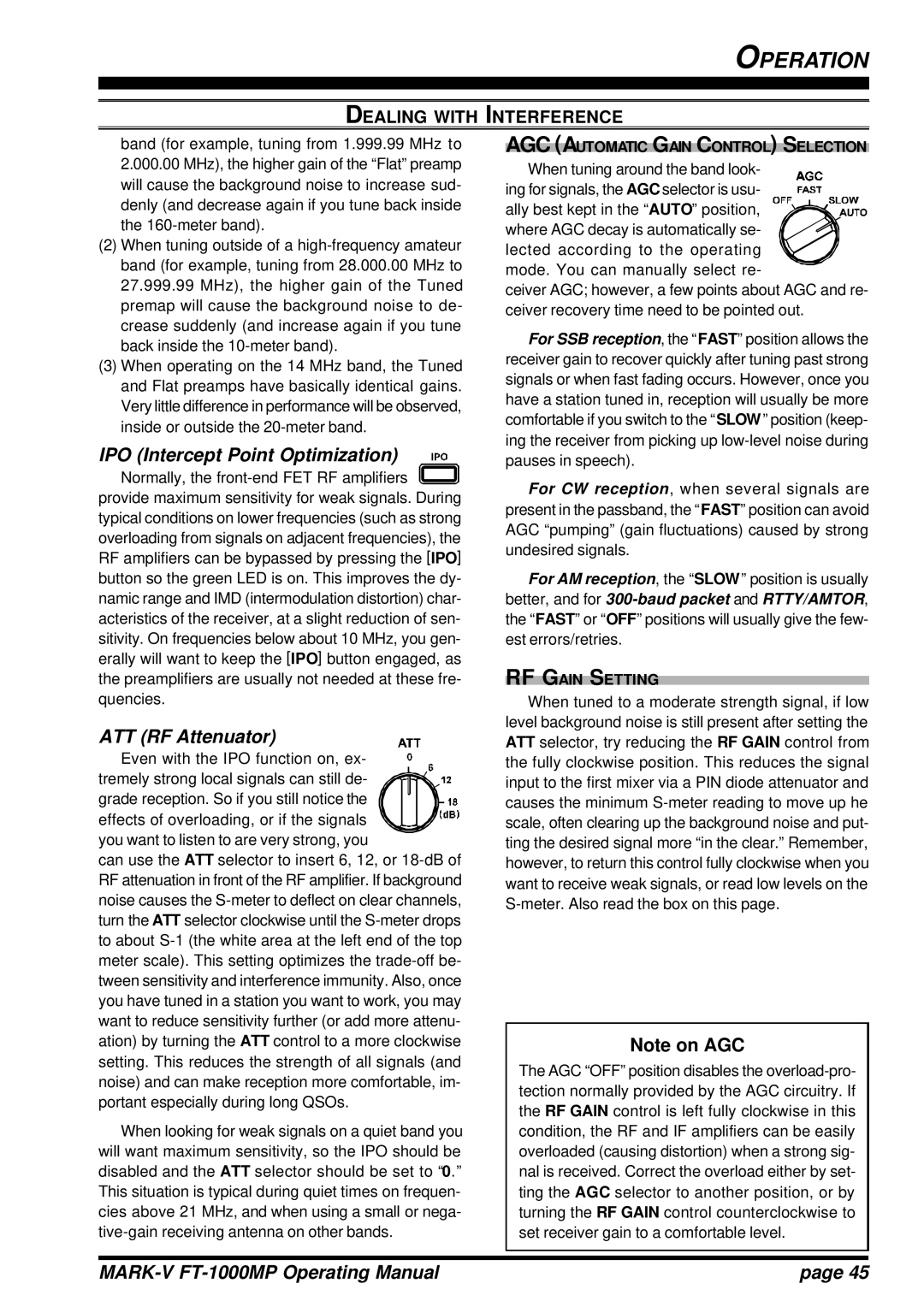
OPERATION
DEALING WITH INTERFERENCE
band (for example, tuning from 1.999.99 MHz to 2.000.00 MHz), the higher gain of the “Flat” preamp will cause the background noise to increase sud- denly (and decrease again if you tune back inside the
(2)When tuning outside of a
(3)When operating on the 14 MHz band, the Tuned and Flat preamps have basically identical gains. Very little difference in performance will be observed, inside or outside the
IPO (Intercept Point Optimization)
Normally, the ![]()
![]() provide maximum sensitivity for weak signals. During typical conditions on lower frequencies (such as strong overloading from signals on adjacent frequencies), the RF amplifiers can be bypassed by pressing the [IPO] button so the green LED is on. This improves the dy- namic range and IMD (intermodulation distortion) char- acteristics of the receiver, at a slight reduction of sen- sitivity. On frequencies below about 10 MHz, you gen- erally will want to keep the [IPO] button engaged, as the preamplifiers are usually not needed at these fre- quencies.
provide maximum sensitivity for weak signals. During typical conditions on lower frequencies (such as strong overloading from signals on adjacent frequencies), the RF amplifiers can be bypassed by pressing the [IPO] button so the green LED is on. This improves the dy- namic range and IMD (intermodulation distortion) char- acteristics of the receiver, at a slight reduction of sen- sitivity. On frequencies below about 10 MHz, you gen- erally will want to keep the [IPO] button engaged, as the preamplifiers are usually not needed at these fre- quencies.
ATT (RF Attenuator) Even with the IPO function on, ex-
tremely strong local signals can still de- grade reception. So if you still notice the effects of overloading, or if the signals you want to listen to are very strong, you
can use the ATT selector to insert 6, 12, or
When looking for weak signals on a quiet band you will want maximum sensitivity, so the IPO should be disabled and the ATT selector should be set to “0.” This situation is typical during quiet times on frequen- cies above 21 MHz, and when using a small or nega-
AGC (AUTOMATIC GAIN CONTROL) SELECTION
When tuning around the band look-
ing for signals, the AGC selector is usu-
ally best kept in the “AUTO” position, where AGC decay is automatically se- lected according to the operating
mode. You can manually select re-
ceiver AGC; however, a few points about AGC and re- ceiver recovery time need to be pointed out.
For SSB reception, the “FAST” position allows the receiver gain to recover quickly after tuning past strong signals or when fast fading occurs. However, once you have a station tuned in, reception will usually be more comfortable if you switch to the “SLOW” position (keep- ing the receiver from picking up
For CW reception, when several signals are present in the passband, the “FAST” position can avoid AGC “pumping” (gain fluctuations) caused by strong undesired signals.
For AM reception, the “SLOW” position is usually better, and for
RF GAIN SETTING
When tuned to a moderate strength signal, if low level background noise is still present after setting the ATT selector, try reducing the RF GAIN control from the fully clockwise position. This reduces the signal input to the first mixer via a PIN diode attenuator and causes the minimum
Note on AGC
The AGC “OFF” position disables the
| page 45 |
